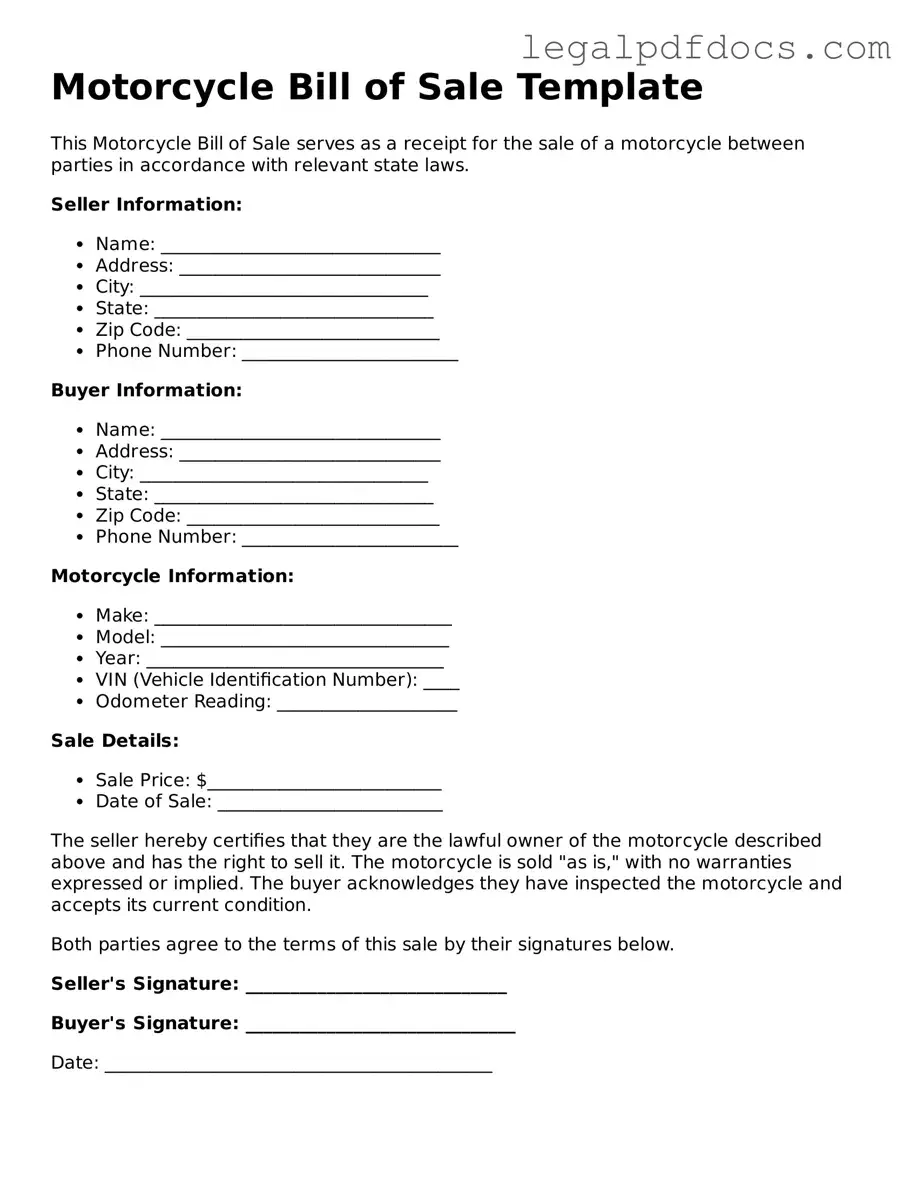Motorcycle Bill of Sale Template
A Motorcycle Bill of Sale is a legal document that records the transfer of ownership of a motorcycle from one party to another. This form serves as proof of the transaction and includes essential details about the motorcycle and the parties involved. Ensuring this document is properly filled out is crucial for both buyers and sellers to protect their interests.
Ready to complete your Motorcycle Bill of Sale? Click the button below to get started!
Open Motorcycle Bill of Sale Editor Here
